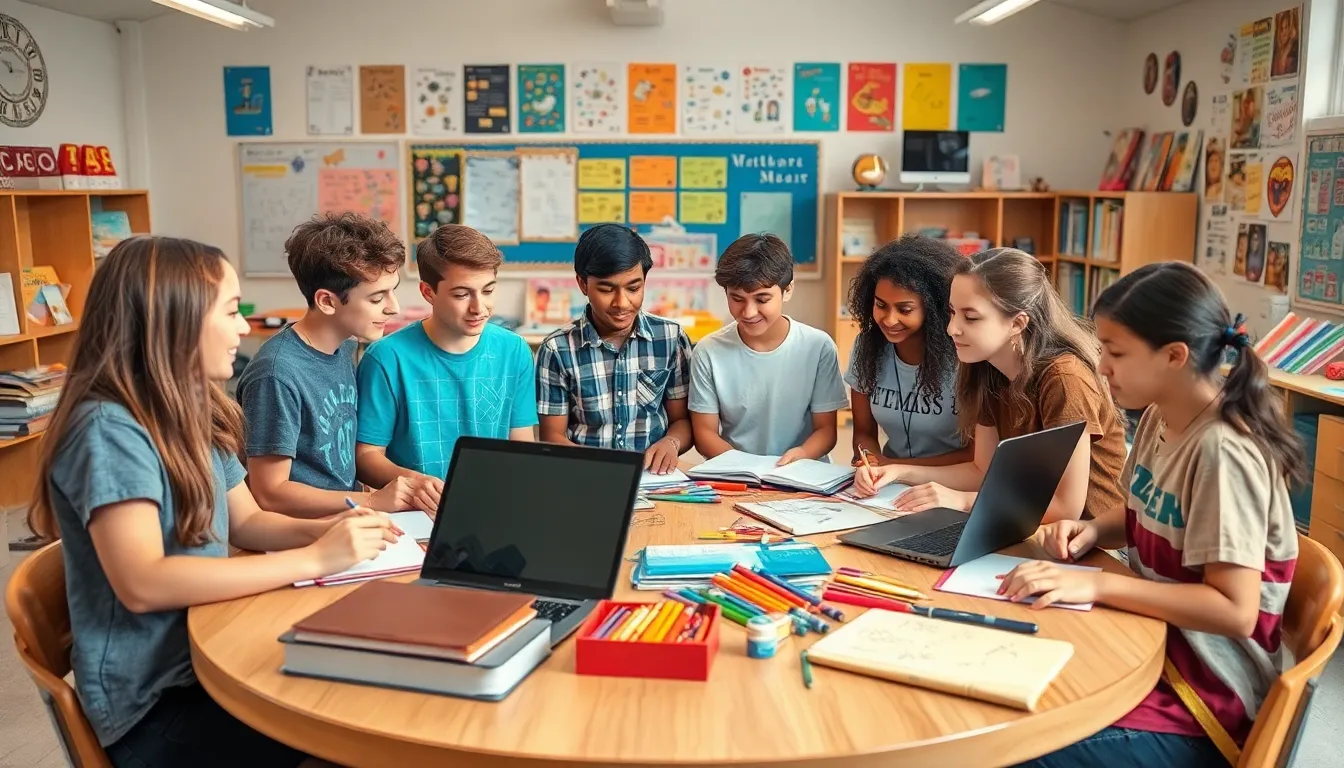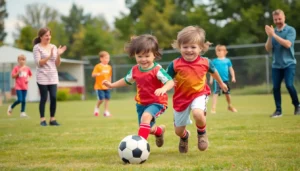Table of Contents
ToggleImagine a world where learning isn’t just about textbooks and tests, but about exploration and curiosity. Freedom in learning opens doors to creativity, innovation, and personal growth. It’s like giving a kid a box of crayons and telling them to color outside the lines—suddenly, the possibilities are endless!
Understanding Freedom In Learning
Freedom in learning allows individuals to explore subjects driven by their interests. This approach nurtures creativity and personal growth.
Definition and Importance
Freedom in learning encompasses an individual’s ability to choose how and what they learn. It emphasizes curiosity, exploration, and self-direction. When learners feel empowered, they engage more deeply with materials, discovering connections that foster critical thinking skills. Creative thinking often emerges from an environment that permits exploration. A study by the National Education Association revealed that students are more likely to excel when they pursue topics that resonate with their passions. Recognizing personal interests heightens motivation, leading to transformative educational experiences.
Historical Context
Historically, education relied heavily on rigid structures and standardized testing. Many traditional systems prioritized memorization over critical thinking. In the 20th century, educators began advocating for progressive methods, emphasizing learner autonomy. Reforms shifted focus towards experiential learning, showcasing the potential of freedom in education. Prominent figures like John Dewey championed the idea that learning should be relevant to students’ lives. This progressive movement laid the groundwork for today’s emphasis on student-centered classrooms, promoting individual paths in educational experiences.
Benefits of Freedom In Learning

Freedom in learning offers significant advantages that enhance both personal and academic development.
Encouraging Creativity
Creative expression thrives in an environment that promotes freedom in learning. When learners choose their paths, they explore diverse perspectives and innovative ideas. For example, students engaged in project-based learning often produce unique solutions that reflect their interests. Each individual brings distinct experiences to the table, fostering a rich tapestry of thoughts. Engaging with varied topics cultivates originality and nurtures imaginative thinking. Research shows that environments valuing autonomy lead to increased creative output. Empowered learners are more likely to experiment and take risks in their work. This exploration not only boosts creativity but also instills confidence in their abilities.
Fostering Critical Thinking
Freedom in learning significantly enhances critical thinking skills. Learners investigate complex issues and evaluate information when they direct their educational experiences. For instance, inquiry-based learning encourages students to formulate questions and seek answers independently. Each participant develops analytical skills as they assess different viewpoints and weigh evidence. Problem-solving becomes second nature as learners confront real-world challenges. Evidence suggests that learners who engage in self-directed exploration demonstrate stronger critical thinking capabilities. Additionally, these individuals tend to connect concepts across disciplines, enhancing their understanding. By fostering an environment that promotes autonomy, education becomes a catalyst for developing thoughtful and engaged citizens.
Challenges of Freedom In Learning
Freedom in learning presents distinct challenges that require careful consideration. Balancing structure and autonomy emerges as a key obstacle in modern education.
Balancing Structure and Autonomy
Educational systems must find an equilibrium between providing guidance and allowing freedom. Teachers often struggle to maintain engagement while giving students the flexibility to explore. A structured framework helps learners navigate their education, yet excessive rigidity can stifle creativity. Combining both aspects fosters environments where students thrive. Effective strategies may include flexible lesson plans that allow for personal exploration while still meeting curriculum goals. Such approaches encourage students to take ownership of their learning journey.
Addressing Diverse Learning Styles
Addressing diverse learning styles poses another significant challenge in promoting freedom in learning. Each student has unique preferences and learning approaches. Educators face the task of adapting content to suit various styles, often leading to logistical difficulties. Incorporating multiple teaching methods—visual aids, hands-on activities, and collaborative projects—can cater to different needs effectively. Doing so ensures that all students engage meaningfully with the material. Research by the National Education Association emphasizes the importance of personalized learning experiences, which align with students’ individual strengths. Prioritizing these strategies enhances overall academic success and fosters a deeper appreciation for the learning process.
Practical Applications
Educational institutions are increasingly recognizing the importance of freedom in learning. Implementing autonomy in classrooms engages students more meaningfully and promotes deep understanding.
Implementing Freedom in Learning in Classrooms
Teachers can create environments that nurture learner choice. Allowing students to select projects based on personal interests enhances motivation. Providing options for assignments encourages creativity and personal expression. Flexible lesson plans support various learning styles, ensuring all students participate actively. Incorporating technology facilitates self-directed learning, enabling access to diverse resources. Ultimately, when educators prioritize autonomy, they foster a culture of exploration and inquiry.
Case Studies of Successful Programs
Numerous successful programs illustrate the practical applications of freedom in learning. The Montessori method emphasizes student-led exploration through hands-on activities. Schools using project-based learning frameworks see increased student engagement and collaboration. For example, High Tech High in California integrates real-world challenges into the curriculum, allowing learners to tackle meaningful projects. Another example is the Flexible Learning program in Finland, which emphasizes personalized learning paths tailored to individual student strengths and interests. Such innovative approaches highlight the effectiveness of freedom in cultivating critical skills and enhancing academic performance.
Embracing freedom in learning transforms the educational landscape. By prioritizing autonomy and choice, learners can explore their passions and develop critical skills that extend beyond the classroom. This approach not only fosters creativity but also nurtures a deeper understanding of complex concepts.
As educational institutions continue to innovate and adapt, the integration of flexible teaching methods will be crucial. Programs that emphasize personalized learning paths pave the way for students to thrive in environments that celebrate exploration and inquiry.
Ultimately, when learners are empowered to take charge of their education, they become more engaged and confident individuals ready to tackle the challenges of the future. The journey toward a more liberated learning experience is not just beneficial; it’s essential for cultivating the thinkers and innovators of tomorrow.






